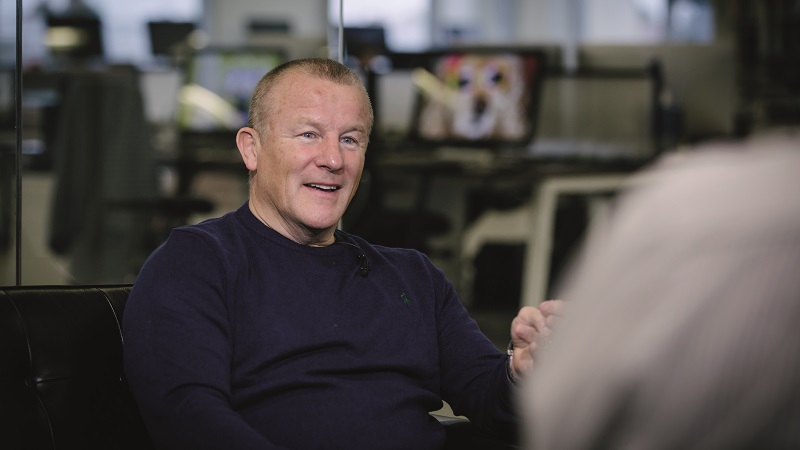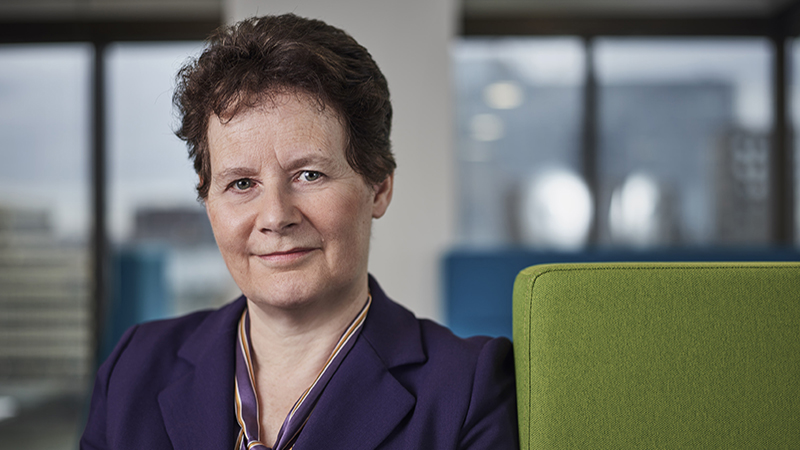According to Vincent Ropers, co-manager of the TB Wise Multi-Asset Growth Fund, asset allocators are at an interesting junction. The strong rebound from the end of March last year fuelled growth until the early part of the summer, but events since have led Ropers (pictured) and co-manager Philip Matthews to view the world through a more cautious lens.
“It’s not to say we don’t think growth can continue, because our base scenario is that it will,” he explains, “but there’s evidence that you can’t keep surprising on the upside forever.”
As such, the duo has dialled down risk in the portfolio, mainly by upping cash exposure. The objective of the TB Wise Multi-Asset Growth Fund is to beat equities so it will always have exposure to risk, but Ropers says it has been necessary to increase cash as well as allocate more to areas that have lagged, like infrastructure debt, asset-backed securities and utilities.
“It’s a way to keep investing in areas where we see growth,” he says. “They’re not pure hedges because we don’t think it’s the time to go all-out defensive and buy puts or strategies that would only perform in a downside scenario.
“We like to buy assets that have underperformed and can keep growing, but might be doing so in a more defensive way that protects us from the downside.”
Trading on recovery
The reflation trade might have died down recently but Ropers thinks the portfolios are still well positioned for recovery. It has a decent exposure to mining because the sector has struggled for a long time, and it should fare well in an environment of higher inflation.
“The miners still look attractively valued to us,” he says. “They are cashflow generative at a time when commodities remain generally in high demand.”
The portfolio also has precious metals exposure through the Jupiter Gold and Silver Fund, which Ropers says should also perform well against an inflationary backdrop. The Jupiter fund is currently skewed towards silver, which, Ropers argues, is not only a high-beta play on gold but also feeds into the decarbonisation theme because of its use in the likes of solar panels and electrical vehicles.
In the value space, the team added to a position in the Polar Capital Global Financials Trust. It holds the global remit of the strategy in high regard and believes the financials sector, which remains out-of-favour with investors, is key for the recovery.
Ropers describes financials as “one of the cleanest reflation trades” as the sector is cheap, in good health and remains generally disliked because people still associate it with the global financial crisis of 2008. “They haven’t caught up with the fact that this time around financials were not the problem but might be part of the solution.” The sector is also tied to rising rates, he adds.
At the end of last month, the managers added to their holding in the Ecofin Global Utilities and Infrastructure Trust as a way of addressing the low-carbon revolution. “A lot of people don’t realise that the big utilities are actually part of the solution, and are cheaply valued, compared with the pure renewables plays. They will probably have a greater impact in terms of how we move to a zero-carbon world.
“Early in September, the trust was trading at a 10% discount. So we took that opportunity and it’s now back to trading at par.”
Next stage of the cycle
Ropers also recently used some cash to add tentatively to Fidelity China Special Situations on the view that at some point people will look back on now as a great entry point in China because of the current pessimism towards the country following the regulatory crackdown and the Evergrande crisis.
The team had reduced exposure to the Fidelity trust earlier this year but is incrementally moving back in. It now represents about 1% of the portfolio with the total China exposure at 4%.
On China, Ropers says: “It’s always that same cycle, you go through a period where you’ve got bad news upon bad news and at some point, everything starts getting priced in. Everyone knows there is a lot of regulatory risk in China, and everyone has now heard about Evergrande.
“There is a lot of pessimism priced in and usually that’s when you want to buy. The problem is that you never know when the bottom is going to be, so our approach is to get in and out of positions gradually.”
According to Ropers, the recovery is becoming more uncertain and some of the “easy gains” have already been made, it is particularly important to continue to look for opportunities for the next stage of the cycle. As such, he and Matthews view private equity as one of the most compelling investment themes, largely because it remains significantly undervalued.
The private equity trusts held are Oakley Capital Investments and Pantheon International. The former is a concentrated portfolio of about 15-20 stocks, focused on the education, consumer and technology sectors. Pantheon, meanwhile, is more of a “one-stop solution for private equity”, providing exposure on a global scale to primary and secondary private equity investments, as well as funds.
Ropers says valuations look increasingly conservative in these trusts given the lag in their reporting at a time when public equity markets have continued to rise strongly. Both trusts are trading on appealing discounts, too.
Essential governance
When it comes to environmental, social and governance (ESG) considerations, Ropers says the fund’s focus has been on good governance, which he regards as essential to being a successful active manager. This is preferable to simply investing in an environmentally friendly fund, just because it is labelled as such, he says.
The key, says Ropers, is to find ways to access long-term trends and not overpay. “That’s why we haven’t got any renewables trusts in our funds, because we just can’t justify the valuations.”
As a play on the environmental theme, the team has Blackrock World Mining in the portfolio. Ropers also sees miners as, somewhat paradoxically, essential to the decarbonisation process.
“Traditional ESG funds would look down on a mining trust, but it seems counterintuitive and a bit hypocritical to close our eyes, as an industry, on a sector that is part of the solution.”
He sees opportunities in the relative potential of growth in precious metals miners versus the rest of the market, given the strength of their cashflows and balance sheets.
The team’s allocation to fixed income has been very low recently but they have started adding positions to more niche strategies. “We have no government bonds and no investment-grade credit. We just don’t think there is enough of a buffer from a valuation standpoint to justify buying them,” Ropers explains.
The portfolio has exposure to the closed-ended Twentyfour Income Fund, an asset-backed securities (ABS) trust Ropers says is one of the few areas where spreads haven’t tightened too much over the past year or so, meaning there is value to be had. Additionally, the floating rate nature of ABS means it is less likely than traditional fixed income to be hit in an inflationary environment.
Other fixed-income exposure comes from through the GCP Infrastructure Trust, which affords access to infrastructure via the debt, which at the moment is a cheaper way of accessing the theme than through pure infrastructure funds. He says: “We’re not prepared to pay 20-25% premium on a trust to get access to that theme.”
This article first appeared in the October 2021 issue of Portfolio Adviser











